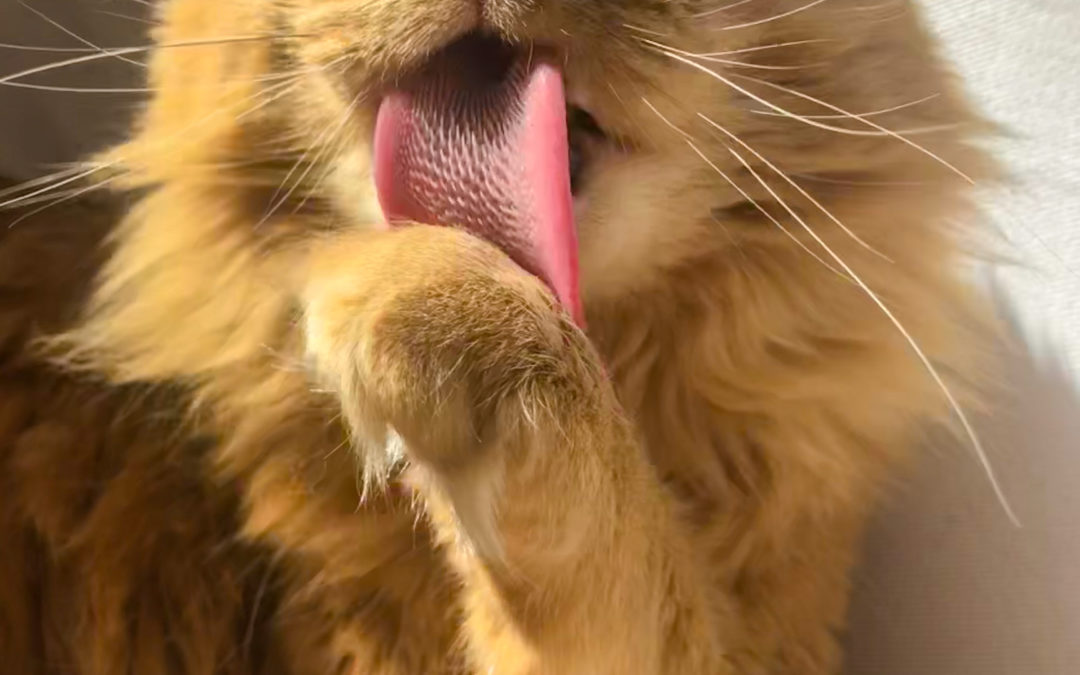Hairballs: A Normal Feline Malady Or A Sign Of Something Bigger?
If you’re a cat owner, you’re likely familiar with hairballs. Because cats are fastidious groomers, they inevitably ingest some of their own fur which accumulates in their stomach. For most cats, this hair slowly moves through the digestive tract, but for some cats, hairballs can grow too large and cause cats to vomit. The occasional hairball is inevitable, but if your cat is vomiting multiple times per week, there could be a larger health issue at play.
If your cat experiences a large number of hairballs, the first step is to try to reduce how much hair they are ingesting. Investing in a couple different styles of brushes can help you find one that works well for your cat’s specific fur texture and that your cat finds comfortable. Most cats go through two large seasonal sheds in the spring and fall. Increase your brushing during those seasons to limit fur ingestion.
Many cats who experience hairballs benefit from a fiber-enhanced diet to help move hair through the GI tract. Over-the-counter and prescription diet options are available. Not sure what food your cat would do best on to manage hairballs? Ask your vet!
If you find that your cat vomits hairballs regularly despite trying the above interventions, or if they are vomiting food instead of hair, don’t be tempted to write it off as normal cat behavior. Diseases such as kidney disease, food allergies, intestinal parasite infection, diabetes, constipation, hyperthyroidism, and inflammatory bowel disease can all cause vomiting and are all quite manageable with the right combination of treatments.
Seasonal Reminders
When the weather warms up, our pets are exposed to a different set of hazards than in the winter. A few reminders to keep your pets safe as we head into spring:
- Ticks and mosquitos are out! Because of our very mild winter, we are anticipating a more severe year for parasites. Make sure your pet is taking preventative medications for heartworm and flea/tick prevention once monthly.
- Keep pets away from fertilizers and pesticides. Pets love exploring freshly planted garden beds, and many fertilizers and pesticides can be harmful if ingested.
- Slowly return to higher-intensity exercise. It can be so tempting to take our pets on an extra long hike on our first nice weekend of the spring, but remember that if they haven’t been exercising regularly, their bodies need time to get back into shape just like ours. Start back gradually to prevent injuries and slowly recondition your pet.
- Spring allergies are back! Many pets experience allergies to pollens that flourish in the springtime. If your pet regularly takes allergy medications such as antihistamines, Apoquel, or Cytopoint to manage spring allergies, now is the time to consider restarting.
- Wildlife babies are being born. We are fortunate to live in an area with a flourishing urban wildlife population, but that means that our pets can sometimes have run-ins with our wild neighbors. Watch closely for baby rabbits, raccoons, birds, and squirrels appearing in your yard in the next few weeks and take precautions to keep these babies safe if they are born in an area that your pet might have access. Most wildlife leave their dens or nests within a few weeks, so you don’t usually need to limit your pet’s access to the yard for too long.
Medication Information Resources
If your pet has been prescribed a medication, you may have a lot of questions about it, including how it works, if it is safe to take with or without food, or if there are any side effects that you need to be monitoring for. These are all great questions to ask your vet, but did you know that most of the medications we prescribe are listed on our website with links to detailed information sheets? Visit https://stfrancisanimalandbird.com/drug-information-sheets/ for more information!
Upcoming Closures
Saturday May 25th-Monday May 27th: Memorial Day Weekend

